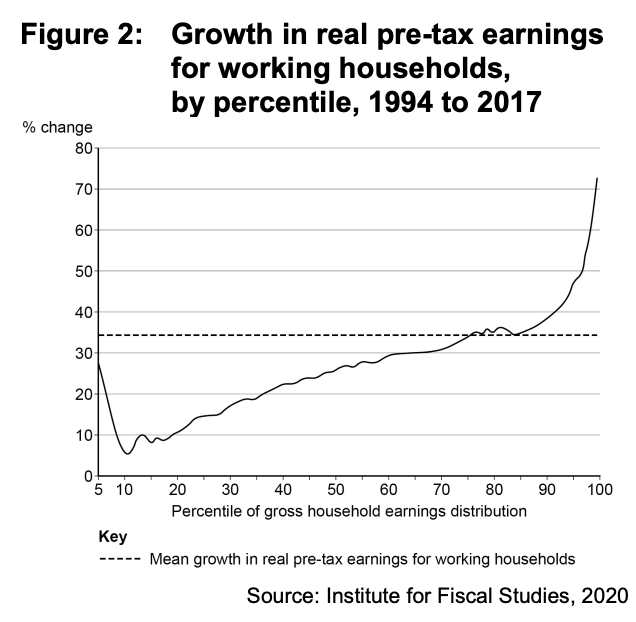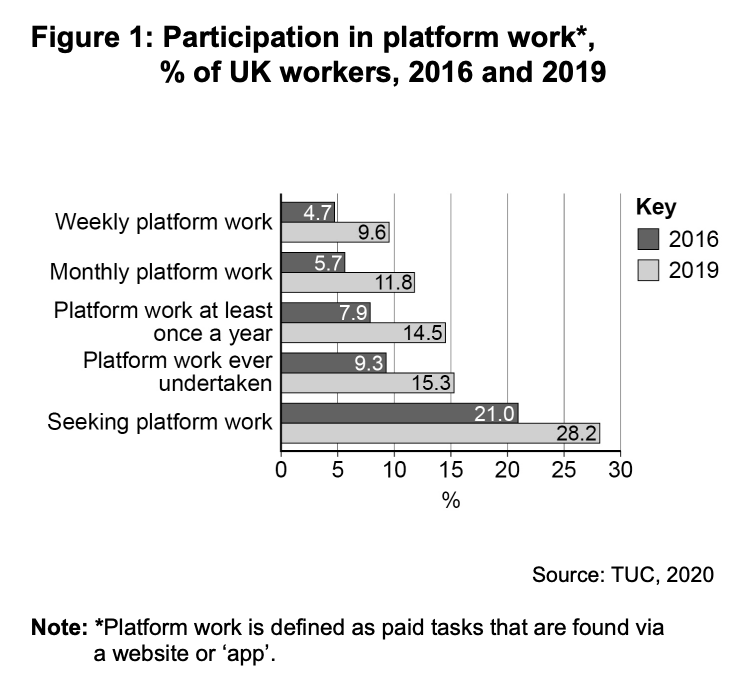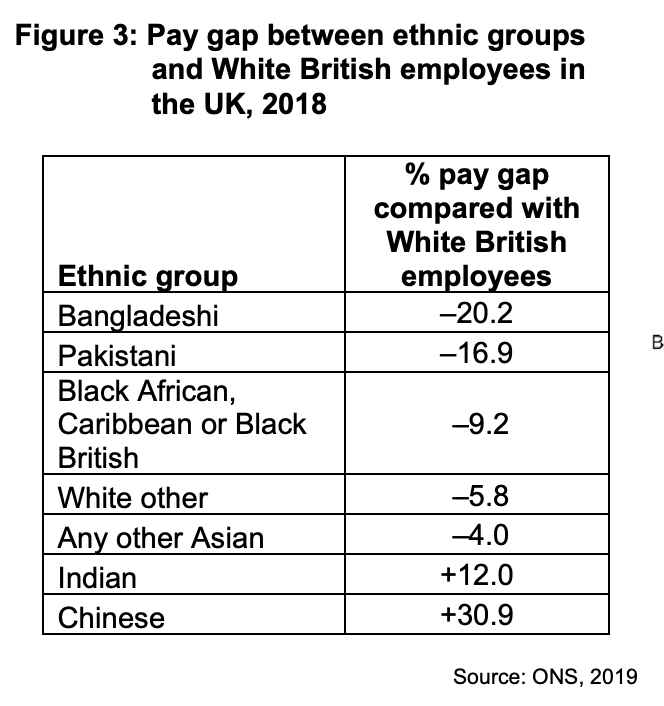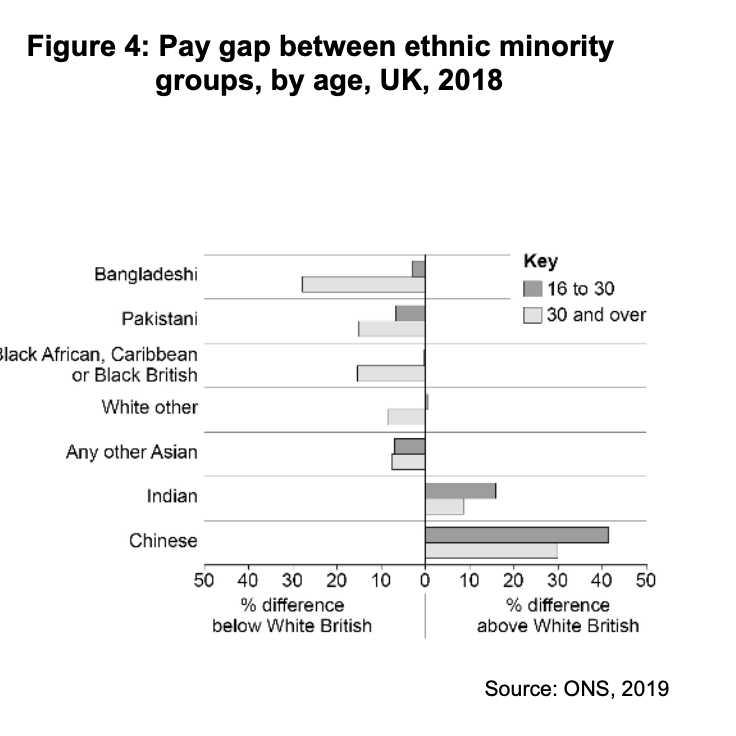Using the data in Extract D (Figure 3), calculate the mean female labour force participation rate for the five countries listed. Give your answer to one decimal place
Case Study

Did this page help you?
Exam code: 7136
Select a download format for 6. The Labour Market
Select an answer set to view for
6. The Labour Market
Using the data in Extract D (Figure 3), calculate the mean female labour force participation rate for the five countries listed. Give your answer to one decimal place

How did you do?
Did this page help you?
Using the data in Extract D (Figure 3), calculate how much the median care worker earns for every pound earned by the median worker in the whole economy. Give your answer to the nearest penny

How did you do?
Did this page help you?
Explain how the data in Extract D (Figure 4) show that the degree of inequality between the pay of male and female workers is falling

How did you do?
Did this page help you?
Explain how the data in Extract D (Figure 4) show that there is likely to be substantial upward pressure on the wages of care workers by 2041

How did you do?
Did this page help you?
Extract E states: ‘Until the 1990s, almost all workers in the care sector were employed by the government, which acted as a monopsonist by keeping wages low.’
With the help of a diagram, explain how a monopsonistic public sector can lead to low pay for social care work
Extract E: Problems in the social care market
Social care in England involves the provision of personal care to adults with needs arising from illness, disability, old age or poverty. Social care is provided to people in their own homes or in care homes. Many people in need of care are on low incomes and cannot afford to pay for it themselves. High quality care provides private benefits and also external benefits, including lower burdens on the NHS and on working relatives. Until the 1990s, almost all workers in the care sector were employed by the government, which acted as a monopsonist by keeping wages low. Over the last 30 years the sector has been largely privatised, with 75% of England’s 15 000 care homes now run for profit. Privatisation was intended to create more choice, improve efficiency and ensure high quality, whilst enabling a quicker response to changing demand.
Since privatisation, the sector has seen further downward pressure on wages. Social care providers, bidding competitively for contracts from local authorities starved of cash, have minimised labour costs. Privatisation does not seem to have improved the quality of care either. Some elderly clients are cared for, in their own homes, by unqualified staff in 15-minute slots, with budgets too small to provide nutritious meals or basic care. Despite the actions of the industry regulator, the Care Quality Commission, there have been many scandals involving care homes in recent years. As a result, some have argued that there are moral and economic arguments for social care to be brought back into public ownership
How did you do?
Did this page help you?
Extract E states that ‘The tendency for women to participate in low-productivity sectors is now a bigger factor in their low pay than discrimination.’
With the help of a diagram, explain how the difference between the marginal revenue product of male and female workers might account for the lower average earnings of women
Extract E: Causes of the gender pay gap
Since the Equal Pay Act 1970, it has been illegal to pay men and women differently for the same work. Despite this, the overall pay gap is 19.2%, according to the Office of National Statistics. The pay gap for full-time workers is lower, at 9.4%, and the gap for part-time workers is actually negative, at -6.5%. In the UK, 41% of female workers are part-time, compared to only 11% of males
Prior to the Equal Pay Act, it was common to find firms paying women less than men for comparable work, but since then discriminatory attitudes have lessened to the extent that some economists deny that the wage gap is a problem at all. A recent report found that women working in the same job, and at the same level, are paid just 0.8% less than their male equivalents. Certainly, the pay gap has been shrinking, partly due to demographic and social changes. In earlier times, most senior, highly paid jobs were held by men, while women of the same generation stayed at home. The Government claims that 2.2 million women who are not working want to work. They believe that increasing the female labour force participation rate could add 10% to the size of our economy by 2030, as well as benefiting women directly
Interestingly, women in their twenties currently out-earn men and it is only when they reach their thirties, and perhaps start a family, that the pay gap starts to emerge. Is this due to employers undervaluing female staff once they have had a baby, or to outdated social conventions that women should be the main childcarers? Most of the highest paid jobs in finance, engineering, science and technology are predominantly populated by men, while most of the lowest paid jobs, like caring and hospitality, are largely done by women. 80% of those working in the low paid care and leisure sector are women, compared to only 10% in the better paid skilled trades. The tendency for women to participate in low-productivity sectors is now a bigger factor in their low pay than discrimination
Source: News reports, April 2016
How did you do?
Did this page help you?
Discuss the view that a national minimum wage is beneficial for an economy
‘Each time the Government imposes a minimum price or wage, the result is almost always excess supply. What matters is the extent to which this is a problem.’
How did you do?
Did this page help you?
Using the data in Extract D (Table 2), calculate the difference between the mean percentage trade union membership in the private sector and the mean percentage trade union membership in the public sector over the period 2001–2021.
Give your answer to one decimal place.

How did you do?
Did this page help you?
Extract E (lines 9–10) states that ‘In November 2022, 13.3% of businesses reported experiencing a shortage of workers leading to upward pressure on wages’.
With the help of a diagram, explain how and to what extent a shortage of labour is likely to affect the wage in a competitive labour market.
Extract E: UK public sector workers hit hardest by cost of living crisis.
In November 2022, members of nursing trade unions voted to strike. Many more public sector unions have joined the nurses on strike, in attempts to gain pay rises that keep up with inflation. It is notable that many of the employers facing strike action, such as the NHS, are monopsonistic employers, who have considerable labour market power.
UK public sector workers have been particularly hard hit by the cost of living crisis, according to official figures that show the gap between public and private sector pay growth is at its widest on record. Annual growth in pay was 6.6% in the private sector in September 2022, compared with just 2.2% for the public sector. Overall, pay growth accelerated to 5.7% as employers struggled to hire workers due to low unemployment. In November 2022, 13.3% of businesses reported experiencing a shortage of workers leading to upward pressure on wages. The construction and hospitality sectors were worst affected.
However, wage growth has not kept pace with inflation, which reached 10.1% in September 2022, leading to growing industrial unrest. Until recently, strikes largely affected local authorities, transport services and some private sector employers. But the latest figures show the pay squeeze has been far worse for teachers, NHS staff and other public sector workers who have started to take industrial action, including strikes. Louise Murphy, economist at the Resolution Foundation, said there was now a “huge wedge” between private and public sector pay, creating severe difficulties for public sector recruitment and retention. Staff shortages in the public sector are likely to worsen unless public sector pay and working conditions improve.
Source: News reports, 2023
How did you do?
Did this page help you?
Use the data in Extract D (Figure 2) to calculate the difference between the mean and median rate of growth of working households’ real pre-tax earnings, over the period 1994–2017.

How did you do?
Did this page help you?
Explain the determinants of the supply of labour to an industry
Since the 1980s, politicians have been freeing up one side of the labour market by reducing the power of trade unions and their influence over the supply of labour. Meanwhile, they have been doing very little about the monopsony power of employers.
How did you do?
Did this page help you?
Using the data in Extract A (Figure 1), calculate the number of workers doing weekly platform work in 2019 for each worker doing monthly platform work in 2019.
Give your answer to two decimal places

How did you do?
Did this page help you?
Explain how the data in Extract A (Figure 2) show that the incentive for workers to become self-employed increased between 2009/10 and 2018/19.

How did you do?
Did this page help you?
Extract C (lines 4–5) states that, as a result of trade union action, ‘The hospital trust increased their £8.21 minimum wage to the London Living Wage of £10.75.’
With the help of a diagram, analyse how a trade union might achieve higher pay for its members.
Extract C: New unions representing gig economy workers.
The cleaners at St Mary’s Hospital in London are members of United Voices of the World (UVW), a new trade union of mostly migrant workers whose employment is not secure. Their October 2019 strike and demonstration were typical of UVW action: joyful, noisy, confrontational and uncompromising. It was also very successful. The hospital trust increased their £8.21 minimum wage to the London Living Wage of £10.75, and decided to employ them directly, rather than via an agency for temporary workers.
As insecure and gig economy work becomes more common, especially among migrant and young workers, new trade unions are developing to meet demand from workers in workplaces with few protections. Since it was founded in 2014, UVW has organised at more than 20 workplaces and won improved contracts, wage rises or sick pay from employers including the Daily Mail Group, the Royal Borough of Kensington and Chelsea and the London School of Economics. It now has more than 3000 members and says it is attracting 200 more every month. Some gig economy firms are starting to recognise workers as employees. Just Eat, which delivers takeaway food, has announced plans to offer workers benefits, including hourly wages above the minimum living wage, sick pay and pension contributions. This sets a precedent in the UK gig economy. The new drivers will be on a mix of full-time, part-time and zero-hours contracts, the company said, allowing some to retain more flexible working hours. The firm said that operating costs would rise as a result of the new scheme but Just Eat felt it was the ‘right thing to do’.
Source: News reports, 2020
How did you do?
Did this page help you?
Using the data in Extract D (Figure 3), calculate how much a worker of Bangladeshi ethnicity earned on average in 2018, given that a White British worker earned £28 677. Give your answer to the nearest pound.

How did you do?
Did this page help you?
Explain how the data in Extract D (Figure 4) show that the ethnic pay gap is more significant for older ethnic minority employees.

How did you do?
Did this page help you?
Extract F (lines 18–19) states: the Government ‘could also take steps to recognise foreign qualifications, thus removing obstacles for well-qualified foreign-born workers.’
With the help of a diagram, explain how UK firms not recognising foreign qualifications may lead to some ethnic groups receiving lower pay.
Extract F: Tackling the ethnic pay gap
It is illegal to pay someone less for doing the same job based on their ethnicity. Andy Haldane, the Bank of England’s Chief Economist, said that “the ethnicity pay gap problem in the UK is every bit as acute as the gender pay gap problem”. A report by the management consultants, McKinsey, found that businesses with employees from the most diverse backgrounds were 15% more profitable than those firms with the least diverse workforce. A government report in 2017 suggested equal participation and progression across ethnicities could boost the UK’s economy by an additional £24bn a year. BAME (Black, Asian or Minority Ethnic) workers are more likely to be in low-paid sectors such as catering, hairdressing and retail. These occupations have limited opportunities for workers to progress to more responsible, higher-paid roles. This may represent a misallocation of workers across the economy.
Only a handful of firms currently publish ethnic pay data. One of these, ITN, found that its BAME workforce were paid 21% less than White workers. The Conservative Government has indicated that it may introduce compulsory reporting of the ethnic pay gap for large firms. The Runnymede Trust said: “as well as getting companies to publish the ethnicity pay gap, you have to legally ask them to publish plans as to how they are going to close that gap. Otherwise, to be honest, nothing is going to happen”. The government can ensure that public services such as the police and NHS provide such plans, but it is not intending to require all firms to do so. It could also take steps to recognise foreign qualifications, thus removing obstacles for well-qualified foreign-born workers. Others think the government should go further and consider ethnicity quotas on the management boards of major companies. In the absence of other reliable solutions, quotas could provide an urgent intervention to address the fact that currently only 4 of the biggest 100 listed companies are led by BAME executives, despite BAME groups accounting for 14% of the population. However, such quotas are rejected by some as discriminatory, patronising and inefficient, leading to the risk of government failure.
Source: News reports, 2019
How did you do?
Did this page help you?
Extract F (lines 12–13) states that ‘Collective pay bargaining, reinforced by the threat of strikes, has achieved some notable successes for workers’.
Using the data in the extracts and your knowledge of economics, evaluate the view that trade unions improve the operation of labour markets by protecting the interests of workers.
Extract F: The role of trade unions.
Over the past century, British unions have successfully campaigned for a minimum wage, holiday and sickness pay, equal opportunity rights, maternity and paternity rights and a two-day weekend for workers. Unions support individual workers in workplace disagreements, and engage in collective bargaining on behalf of their members by negotiating with employers on pay and working conditions. But unions can do much more for employees and even for employers. Research shows that their benefits can include reducing staff turnover, providing or promoting training and encouraging innovation.
UK trade union membership peaked at 13.2 million members in 1979 but fell consistently during the 1980s and 1990s. There has been a recent reversal of this trend with membership increasing in each of the last four years, primarily amongst public sector workers. Unions suggest that new members have been joining due to wages falling in real terms, and the hope that a trade union might protect their interests. Collective pay bargaining, reinforced by the threat of strikes, has achieved some notable successes for workers, such as the 18% pay rise for London bus drivers in February 2023. However, 205 000 working days were lost to strike action in September 2022, almost as many as in the whole of 2019. Critics argue that strikes by transport workers, teachers, nurses and others create enormous disruption for everybody else and make labour markets less efficient.
Source: News reports, 2023
How did you do?
Did this page help you?
Extract B (lines 16–18) states that, ‘Gig economy defenders claim that today’s flexible labour markets offer modern workers the opportunity to move freely between jobs and this gives them more choice over their working hours.’
Assess the view that government intervention in the UK labour market is necessary to protect the interests of people who are working in the gig economy
Extract B: The gig economy
The gig economy can be defined as that part of the labour market characterised by short-term contracts or occasional work, as opposed to permanent jobs. The rise of gig economy work has been driven by new technology, enabling people to work from anywhere, any time. Many self-employed people work in the gig economy through online platforms such as Uber, Deliveroo and Airbnb. These roles often replace employee roles in sectors including cleaning, taxi driving, pizza delivery, project managers and personal training.
Gig economy workers face higher risks and more uncertainty about the stability of their incomes than standard workers. They tend to earn less than employees doing similar work and they also tend to work longer hours. However, they do have greater flexibility and control over their work life balance. People who have other responsibilities beyond work (for example childcare) may choose to work in the gig economy because it allows them to allocate their time as they choose.
The government has pledged to combat unfair working practices associated with zero-hours contracts and the gig economy. They are seeking to bring gig employers into line with the standards and regulations by which other employers must abide. However, providers of meal delivery, ride-sharing and other gig economy services warn that tighter regulations will damage economic efficiency and employees will lose out. Gig economy defenders claim that today’s flexible labour markets offer modern workers the opportunity to move freely between jobs and this gives them more choice over their working hours.
Source: News reports, 2020
How did you do?
Did this page help you?
Evaluate the view that labour markets work best when strong monopsony power is balanced by trade union power
Since the 1980s, politicians have been freeing up one side of the labour market by reducing the power of trade unions and their influence over the supply of labour. Meanwhile, they have been doing very little about the monopsony power of employers.
How did you do?
Did this page help you?
Extract E (lines 3–4) states: ‘significant pay gaps remain, even when education and occupation are taken into account, particularly for those born outside the UK.’
Using the extracts and your knowledge of economics, evaluate possible government policies to reduce the ethnic pay gap
Extract E: The Ethnic Pay Gap
UK workers of Bangladeshi heritage have the lowest pay of any ethnic group, earning 20.2% less than White British workers. Analysis by the Office for National Statistics (ONS) shows significant pay gaps remain, even when education and occupation are taken into account, particularly for those born outside the UK. The median pay of White British workers last year was £12.03 an hour, compared with £9.60 for people of Bangladeshi ethnicity and £10.00 for those of Pakistani ethnicity. These groups also had the lowest employment rate. British-born employees of Chinese ethnicity earned the most of all groups, earning 30.9% more than White British workers.
Evidence suggests that the ethnic pay gap is reducing as the UK labour market evolves over time. People aged 16 to 30 from ethnic minority groups tended to have narrower pay gaps than older ethnic minority groups. For instance, the difference for the Bangladeshi ethnic group compared with White British workers was 3.1% among 16 to 30-year-olds but 27.9% for those over 30. Women in some ethnic groups were significantly less likely to be in the labour force than women in other ethnic groups. The ONS suggested that this could be a result of cultural differences as 38.1% of women from a Bangladeshi ethnic group and 32.1% of women from a Pakistani ethnic group were found to be economically inactive. This may be because they were looking after their family or home.
Source: News reports, 2019
How did you do?
Did this page help you?